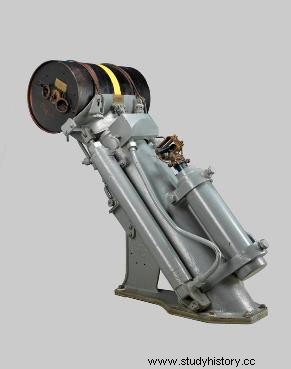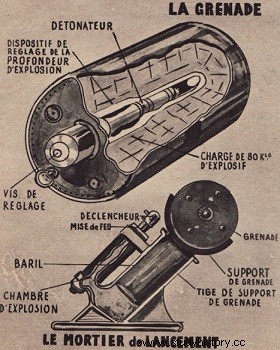
Once the U-boat was located, the problem was n attack, and succeed in the attack. At the start of hostilities, no navy used any means other than the depth charge. It was simply a large steel cylinder containing about 150 kg of a powerful explosive, fitted with a fuze sensitive to water pressure and set for a specific depth. Having detected a submarine with ASDIC. the attacking ship was trying to pass exactly overhead, in order to throw one or more grenades vertically. The cylinder was designed to sink slowly so that the launching ship was far enough away when it exploded. When the craft had reached the desired depth, the pressure of the water pushed back a spring-loaded diaphragm; the firing pin struck the detonator, causing the explosion. This was capable of sinking the plates of any submersible up to about a hundred meters.

But the sea is great and a hundred meters is a small thing; for a number of reasons, the grenade did not have the effectiveness that was hoped for. First of all, the submarine did not let it go; as the assailant charged him, he could veer to avoid him and increase his speed to get away from the danger zone. Then the adjustment of the depth of explosion included elements of uncertainty:the rocket models were few, and it was necessary to choose one among a restricted number, choice based according to the indications of the ASDIC, on the experiment and on speculations. But if the setting was not the right one, the submarine could still escape. Finally, at the critical moment, the attacker still lost contact with the latter; indeed, for various technical reasons, the ASDIC no longer gave any indications when it was near or just above the U-boat, which could often slip away during this dead time and never be again found. In the best-case scenario, it would take the attacker several minutes to re-spot the target and make another attack.
The Colonial Pact consisted of a set of rules that guaranteed the European metropolises, from the time of mercantilism, an effective control of their products. By Me. Cláudio FernandesThe assembly of the Portuguese Colonial System and Spanish in American lands it took place from the 16th century on
